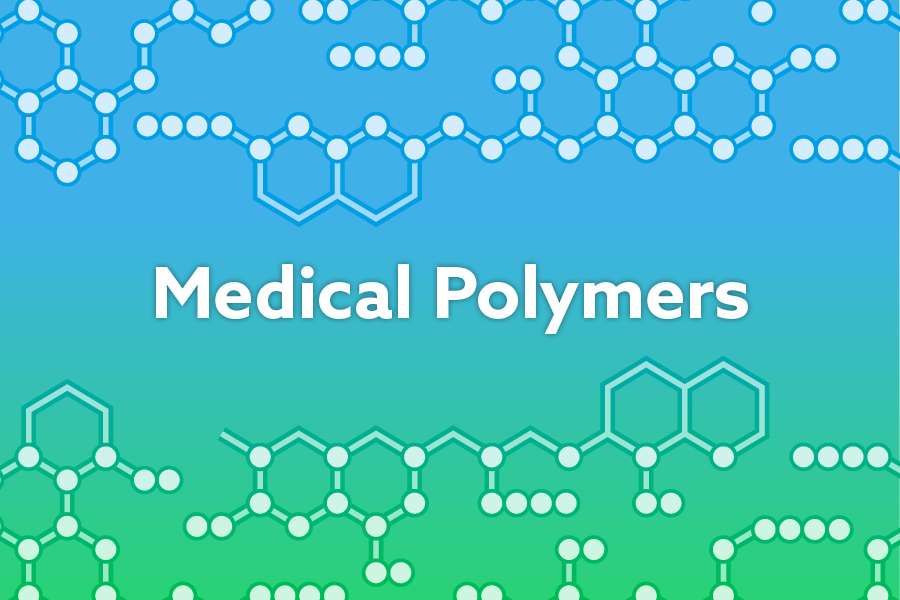Medical Polymers

Join us for a 2 part webinar series as we explore the dynamic world of medical polymers.
Programme 27 February
15:00 - 15:45 The Evolution of Polymers Used in Medical Devices: And the Successful Search for Alternative Materials to Flexible PVC.
15:50 - 16:35 Medical Polymers From an Industry Perspective - The View of Medtech And Pharma
16:40 - 17:25 Environmental Stress Cracking
Programme 28 February
15:00 - 15:45 Navigating the Future of Medical Polymers: Insights on PVC
15:50 - 16:35 Engineering Polymers for Medical Devices with Focus on Performance, Regulatory and Management of Change Needs
16:40 - 17:25 Medical Device Innovation with Polyurethanes
17:25 - 18:35 Polymeric Biomaterials for Medical Implants
You will hear from
The Evolution of Polymers Used in Medical Devices: And the Successful Search for Alternative Materials to Flexible PVC
Flexible PVC was used to develop some of the first plastic medical devices, flexible blood and IV bags. After these plastic products were introduced and found to be very well received, it opened up the industry to the use of many other plastics for various medical devices.
But right from the early days of its use, flexible PVC was questioned because of the plasticiser DEHP used to make it soft. In spite of the huge amount of testing already done showing that it was not in any way toxic, the medical device manufacturer embarked on a program to find or develop alternative materials for the fPVC.
Environmental Stress Cracking
Environmental stress cracking (ESC) is a phenomenon in which a plastic resin undergoes premature embrittlement and subsequent cracking due to the simultaneous and synergistic action of stress and contact with a chemical agent. ESC is a leading cause of plastic component failure, and a recent study suggests that more than 25% of plastic part failures are related to ESC.
The presentation will be presented from a practical viewpoint to illustrate the ESC mechanism and explain plastic performance. Topics covered during this session include:
- Introduction to ESC
- Explanation of the ESC failure mechanism
- Generalizations related to chemical interaction with plastics
- ESC resistance testing used to evaluate plastic/chemical compatibility
- Case illustration
If you deal with plastic components, then “Environmental Stress Cracking” will provide you with information that will enhance your understanding of the interaction between chemicals and plastic resins, and help prevent premature failure.
Medical Device Innovation with Polyurethanes
Polyurethanes are extremely versatile materials. They can range from hard, rigid materials to soft, pliable gels. This versatility, combined with their acceptance in the body, makes them very attractive as biomaterials. Polyurethanes can also be formulated as being either biologically stable or bioresorbable materials. This adds to their versatile nature and allows them to be used in a wide variety of medical applications.
There are numerous instances of polyurethane formulations helping to solve different issues, allowing for greater efficiencies in medical treatments. This presentation will give an overview of the use and applications of polyurethane biomaterials within different body systems. The long use of polyurethane biomaterials in medical applications has helped us understand the requirements of a material formulation to withstand long-term implantation applications. On the other hand, it has also helped us in designing formulations that can be bioresorbable in nature. There are also areas in the use of polyurethanes in drug delivery applications and biosensors, and these applications are growing in potential.
Medical Polymers From an Industry Perspective - The View of Medtech And Pharma
Navigating the Future of Medical Polymers: Insights on PVC
In this session, PVCMed Alliance Project Manager Ole Grøndahl Hansen will delve into significant developments within the domain of medical polymers, with a primary focus on Polyvinyl Chloride (PVC).
The discussion commences with an in-depth analysis of the recent investigative report on PVC and its additives released by the European Chemicals Agency. Ole will explore the report's findings and its direct implications for the use of PVC in the healthcare sector. Additionally, Ole will examine the extended use of Di(2-ethylhexyl) phthalate (DEHP) under the REACH regulation and its harmonisation with the EU Medical Device Regulation (MDR), providing valuable insights into the evolving regulatory landscape.
A central theme of the conversation will be the sustainability efforts spearheaded by VinylPlus® Med. Ole will highlight their innovative recycling initiatives, where short-lived PVC products are repurposed into durable hospital wall coverings, contributing to sustainable healthcare infrastructure in Europe.
Moreover, Ole will spotlight the VinylPlus® Pharmpack project. It is a joint effort between VinylPlus, PVC film producers, and recyclers is dedicated to promoting the sustainable development of PVC pharma blister packaging.
Join us for a comprehensive exploration of PVC's role in the healthcare industry, as we discuss pertinent regulatory updates and commendable sustainability initiatives within the medical polymer field.
Polymeric Biomaterials for Medical Implants
Biomaterials play a crucial role in tissue engineering, serving as soft implants, aiding drug delivery, and facilitating wound healing systems. They are favoured for their flexibility, ease of production, and compatibility with the body. These materials possess diverse mechanical, electrical, chemical, and thermal properties when combined with other substances to form composites. Our research has resulted in a wide array of bioactive and biocompatible polymeric composites.
These possess specific structures that can deliver bioactive substances in a sequential manner, aiding different stages of tissue healing while providing support to the damaged area. Moving forward, our studies will focus on enhancing existing biomaterials. We aim to incorporate customised bioactive and biocompatible materials into current nanocomposites to refine their mechanical properties, porosity, and degradation features.
Engineering Polymers for Medical Devices with Focus on Performance, Regulatory and Management of Change Needs
Engineering resins are used for demanding performance and high-volume manufacturing needs in medical devices. Not an exhaustive list, these can include low friction tribology, creep resistance, accelerated ageing, sterilisation, colouring, mechanical strength, stiffness, dimensional stability, and multi-million part moulding productivity.
Another aspect of selecting polymers is the regulatory needs of medical device materials, which can include biocompatibility data and management of change, which is important for applications with years in R&D, clinical trials and manufacturing scale-up over many additional years. This presentation will give an overview from a polymer manufacturer’s perspective on why working with a quality medical plastics supplier from an early R&D stage is so important in the long run.

















